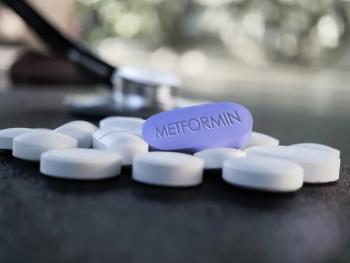
Incidence and mortality of neonatal preterm birth
The authors of a study in JAMA Pediatrics sought to answer the question: What is the burden of neonatal preterm birth at the global, regional and national levels?
Despite a global decrease in the incidence and morality of neonatal preterm birth from 1990 to 2019, in Southern Sub-Saharan Africa there remains an increasing trend in the overall age-standardized incidence rate (ASIR) in high sociodemographic index (SDI) regions and in the age-standardized mortality rate (ASMR), according to a study in JAMA Pediatrics.1
The authors sought to answer the question: What is the burden of neonatal preterm birth at the global, regional and national levels?
The cross-sectional study used data from the 2019 Global Burden of Disease (GBD) study.2
Data from 204 countries and territories were divided into five SDI regions and 21 GBD regions, according to geographical contiguity.
Data on sociodemographic status, including SDI and the universal health coverage index (UHCI), from 204 countries and territories were also collected from the Global Health Data Exchange query tool.
Among infants born alive before 37 completed weeks of gestation between 1990 and 2019, the global incident cases of neonatal preterm birth decreased by 5.26%: from 16.06 million in 1990 to 15.22 million in 2019.
More dramatically, deaths decreased by 47.71%: from 1.27 million in 1990 to 0.66 million in 2019.
The overall ASIR of neonatal preterm birth decreased in the same period (estimated annual percentage changes [EAPCs] = −0.19): from 244.19 per 100 000 in 1990 to 234.96 per 100 000 in 2019.
The ASMR of neonatal preterm birth also decreased, by a mean of 2.09% per year in the same period: from 19.34 per 100,000 in 1990 to 10.24 per 100,000 in 2019.
In high SDI regions, the incident cases of neonatal preterm birth decreased by 5% from 1990 to 2019. But the ASIR of neonatal preterm birth in these high-SDI regions increased in the same period (EAPC = 0.25): from 171.30 per 100,000 in 1990 to 183.62 per 100,000 in 2019.
On the other hand, the ASIR of neonatal preterm birth decreased in low, low-middle, middle and middle-high SDI regions.
The number of deaths of neonatal preterm birth decreased by more than 50% in low-middle, middle, middle-high and high SDI regions, yet increased by 4.62% in low-SDI regions from 1990 to 2019.
In low SDI regions, the growing number of deaths of neonatal preterm birth was in nearly neonates aged 0 to 6 days.
Overall, the ASIR of neonatal preterm birth increased by a mean of 0.25% in high SDI regions from 1990 to 2019.
The ASMR of neonatal preterm birth also increased by a mean of 2.09% in Southern Sub-Saharan Africa in the same time period.
Furthermore, the study found a positive correlation between EAPC of ASIR and SDI or the UHCI in 2019; conversely, there was a negative link between EAPC in ASMR and SDI or UHCI in 2019 at national levels.
“Preterm birth remains a crucial issue in children worldwide,” wrote the authors. “Efforts to reduce both the incidence and mortality of preterm births are essential.”
References
Cao G, Liu J, Liu M. Global, regional, and national incidence and mortality of neonatal preterm birth, 1990-2019. JAMA Pediatr. Published online May 31, 2022. doi:10.1001/jamapediatrics.2022.1622
GBD 2019 Diseases and Injuries Collaborators. Global burden of 369 diseases and injuries in 204 countries and territories, 1990-2019: a systematic analysis for the Global Burden of Disease Study 2019. Lancet. 2020;396(10258):1204-1222. doi:
Newsletter
Get the latest clinical updates, case studies, and expert commentary in obstetric and gynecologic care. Sign up now to stay informed.










